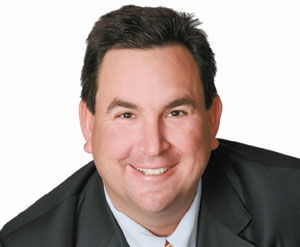What will it take for the housing market and employment to
really improve? It really boils down to the two greatest economic
factors of all: supply and demand.
What will it take for the housing market and employment to really improve? It really boils down to the two greatest economic factors of all: supply and demand.
What needs to happen in the labor market? Ideally, a swift rise in consumer demand for goods and services in 2011 spurs businesses to hire, with no need for another costly federal stimulus. About 125,000 people enter the U.S. labor force every month, so job creation needs to hit that level just to tread water in terms of employment-to-population ratio. Data from the Brookings Institution shows that 280,000 new positions emerged monthly at the peak of job creation in the 2000s. Back in 1994, the economy was creating an average of 321,000 new jobs a month.
As 2010 drew to a close, our economy wasn’t anywhere near that. According to the Labor Department, 71,000 new non-farm jobs were created in November and 103,000 new non-farm jobs in December.
Last month, the government said that private payrolls grew by 113,000 (297,000 according to payroll services provider ADP). Yet the December report also indicated a 1.3 million month-over-month rise in the population of discouraged workers who had simply stopped seeking jobs.
On Dec. 7, Federal Reserve chairman Ben Bernanke told the Senate Budget Committee that while we were seeing a “self-sustaining” economic recovery, the jobless rate would likely remain elevated through 2015 or 2016.
Perhaps 2011 could be better than we expect. A Manpower Inc. survey of employers in December found that 73 percent foresaw no change in the pace of hiring at their firms for the first quarter of 2011.
However, the survey did find that seasonally adjusted hiring was projected to rise from 5 percent in the past quarter to 9 percent in first quarter of 2011. That represents a significant jump in net hiring and suggests either the perception or reality of rising demand in some industries.
The Bureau of Economic Analysis recently reported a 3.4 percent year-over-year rise in disposable personal incomes for the third quarter of 2010, which would seem to promote a consumer spending increase.
Federal Reserve data showed consumer credit card debt ticking back up by 0.6 percent in September and 1.7 percent in October after months of decreases; this is another potential sign of a rebound in consumer spending and consumer confidence.
What needs to happen in real estate? Well, two key factors do seem to be in place to encourage a rebound. Interest rates on 30-year conventional home loans are still below 5 percent.
Compare that with 9.4 percent as recently as the early part of 1989. The Standard & Poor’s/Case-Shiller Home Price Index tells us that existing home prices dropped 29.6 percent between July 2006 and October 2010, and some analysts see them falling further. But two cold, hard facts remain in the way of a recovery.
You can’t buy a home if you don’t have a job. Unemployment and its cousin underemployment represent the biggest drag on the real estate market – thwarting purchases, reducing demand, and hastening delinquencies and foreclosures.
You can’t readily sell your home if it is “underwater”. The latest CoreLogic Inc. data shows that 22.5 percent of U.S. homeowners owe more than their residences are worth.
During 2009-2010, any sense of momentum or recovery seemed a product of government intervention. The homebuyer tax credit led to a spike in sales, then a reversal. Turning from the month-to-month “weather” of the real estate market to year-over-year numbers, you would think things couldn’t get any worse: according to the latest figures (November), existing home sales were down 27.9 percent year-over-year and new home sales down 21.2 percent from 12 months before.
However, some of the “weather” bears studying; things did get sunnier during 2010 in some respects. Mortgage rates didn’t rocket north when the Fed ended its campaign to buy mortgage-backed securities last March. (The European debt crisis had an effect.)
Existing home sales rose by 5.6 percent in November, and the rate of new home purchases also improved by 5.5 percent. Pending home sales, as tracked by the National Association of Realtors, were up a record 10.4 percent in October and up another 3.5 percent for November.
Ideally, 2011 brings some kind of sweet spot for the residential real estate sector where job creation ramps up while mortgage rates remain historically low for a few months. That could contribute nicely toward a recovery in the sector in 2012.










